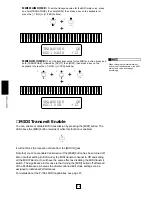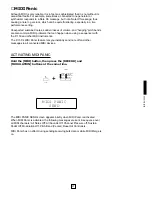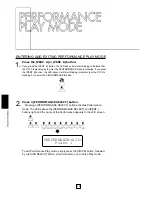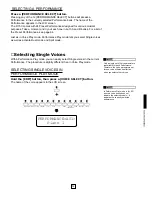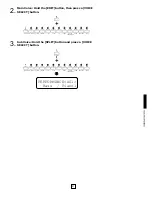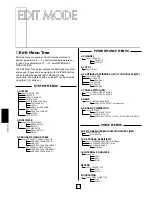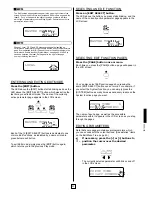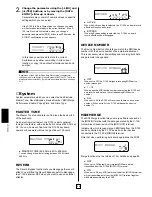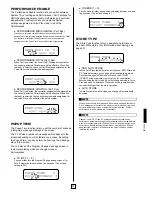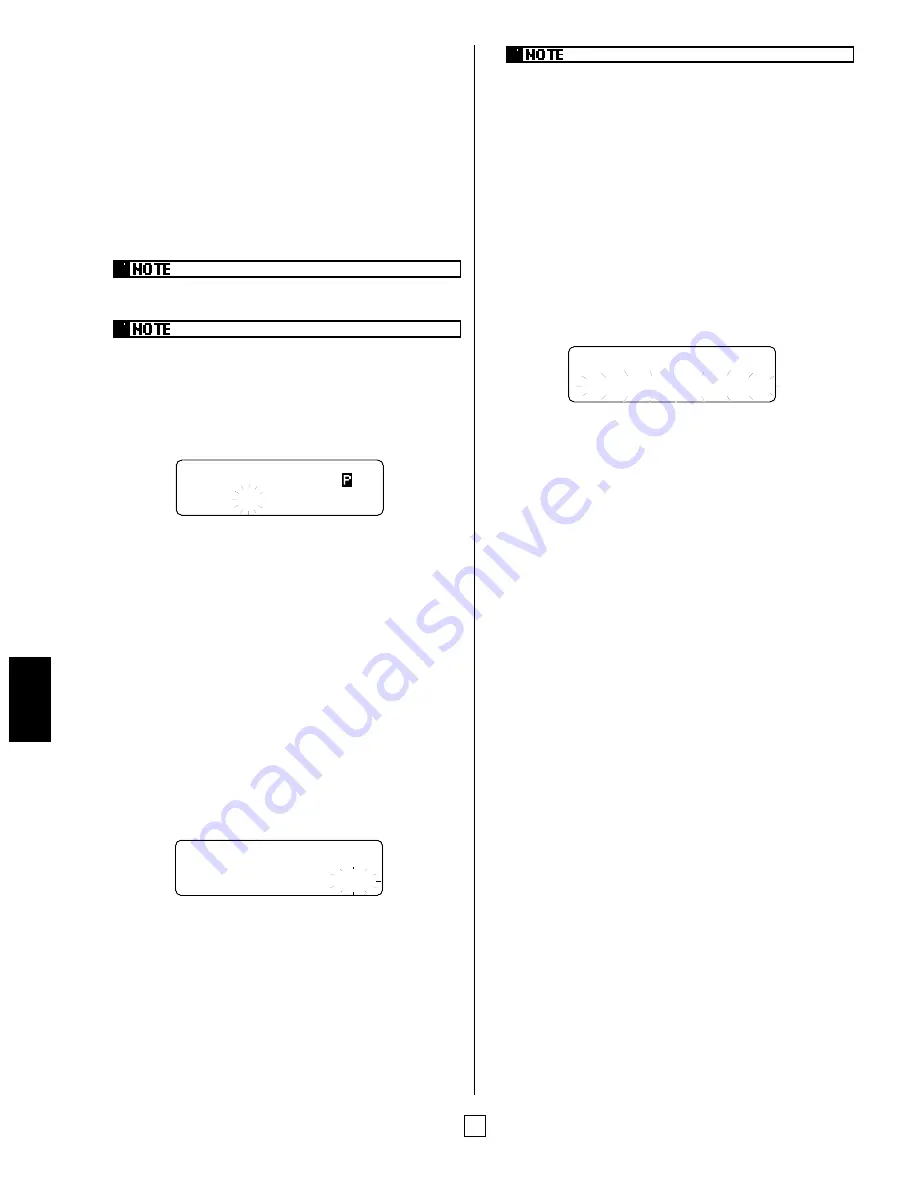
48
EDIT MODE
●
TRANSMIT CHANNEL (Off, 1 ~ 16)
The P-150 can be set to transmit MIDI messages on any one of
16 MIDI channels. When set to Off the P-150 will not transmit
MIDI messages.
●
RECEIVE CHANNEL (Off, 1 ~ 16, All)
The P-150 can be set to receive MIDI messages on any one of
16 MIDI channels. When set to Off, all incoming MIDI messages
will be ignored. When set to All, MIDI messages can be received
on all 16 channels at once. In Dual and Single modes, all
channel messages will be transmitted via the channel specified
here. In Split mode, the main voice will be transmitted via the
channel specified here and the sub voice will be transmitted via
the next highest channel number than the main voice.
When you set the transmit channel to Off, the MIDI transmit button will be
disabled for the currently selected Performance.
If you select Sys for MIDI CHANNEL in the Performance Enable function
(System menu), the MIDI transmit/receive channel you have previously
set for the currently selected Performance may actually be different, since
the current setting (System setting) in the Voice Play mode will be active.
You can change the System setting, and you can easily find which setting
(Sys or Perf) is selected in the Performance Enable function, as the letter
P will display to the left of the page number if Perf is selected.
■
Local
The Local control function lets you disconnect the P-150’s
keyboard from its internal tone generator.
It is usually turned on so the internal voices will sound when
you play the keyboard. When turned off, the internal tone
generator will not respond to the notes you play, but the
keyboard will still transmit messages via the [MIDI OUT]
terminal, and the internal tone generator will respond to
messages received at the [MIDI IN] terminal if the transmit
channels or receive channels are appropriately set. This is
essential when using the P-150 as a master keyboard
controller in an expanded MIDI system.
●
LOCAL (On, Off)
When set to On, the internal tone generator will respond to notes
you play on the P-150’s keyboard. When set to Off, the internal
tone generator will not respond to notes you play on the P-150’s
keyboard.
If you select Sys for LOCAL in the Performance Enable function (System
menu), the Local On/Off setting you have designated previously for the
currently selected Performance may actually be different, since the
current setting (System setting) in the Voice Play mode will be active. You
can change the System setting, and you can easily find which setting
(Sys or Perf) is selected in the Performance Enable function, as the letter
P will display to the left of the page number if Perf is selected.
■
Continuous Slider (CS) /
Foot Controller (FC)
This function lets you assign a function and range to the [CS]
and [FC] assignable continuous controllers, for realtime
control during performance of the P-150 and/or an external
MIDI device.
Once you assign a function to the [CS], the function will be
controlled by the [CS] slider on the panel. Once you assign a
function to the [FC], the function will be controlled by the
Foot Controller, if it is properly connected to the [FOOT
CONTROLLER] jack on the rear panel. The Yamaha FC-7
Foot Controller (continuous type) and FC4/FC5 Footswitch
(on/off; discrete type) are optionally available.
For example, you can have the [CS] (or [FC]) control the
total volume, main or sub voice volume, or control the reverb
depth or modulation speed, or transmit aftertouch messages
to tone generators capable of receiving them, or send a
particular type of control change message to external MIDI
devices. The types of functions which can be assigned, and
a brief explanation of each, are shown in the following chart.
LOCAL 1
on
CHANNEL TRNS %1p
TX= 1 RX= 1
CS ASSIGN 1
main volume:007



